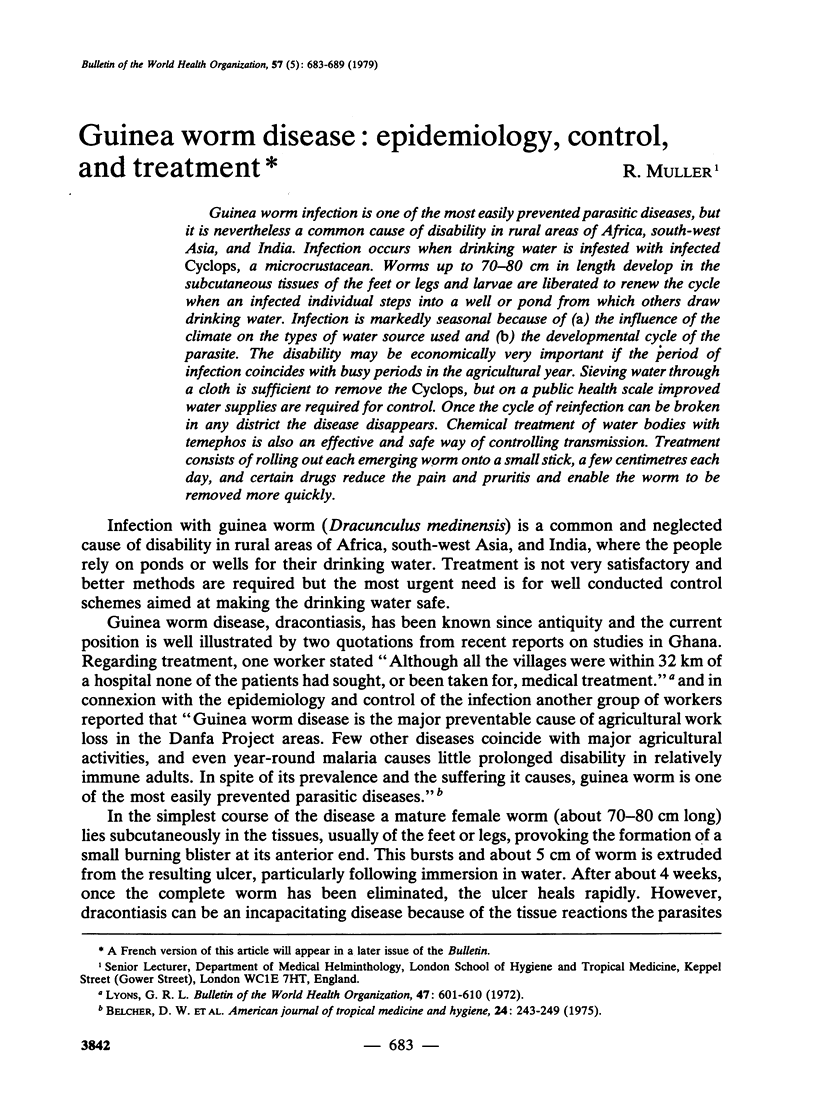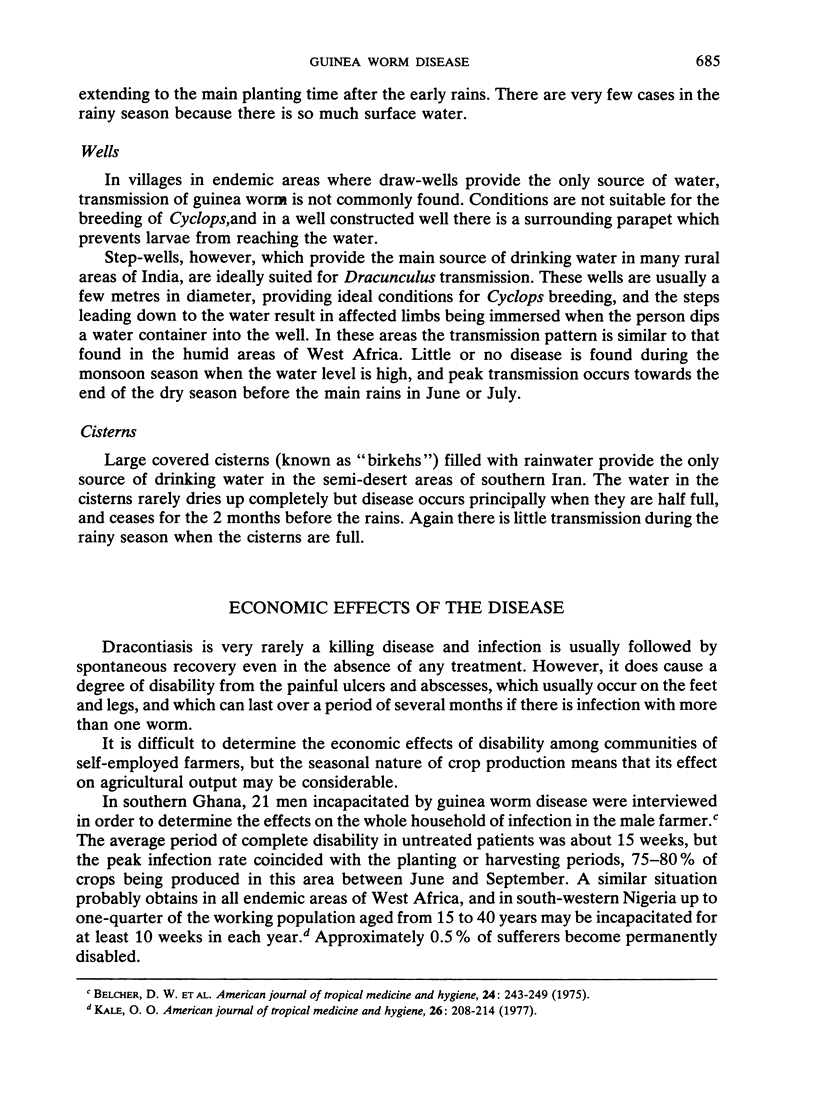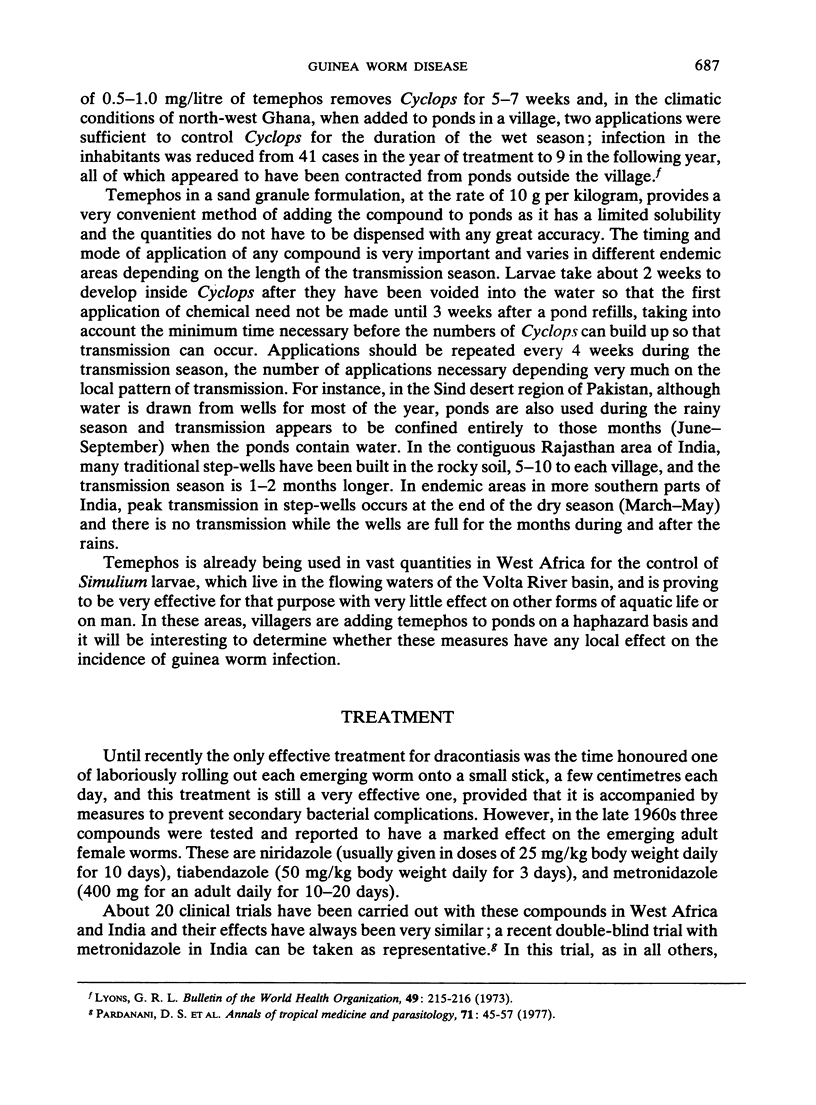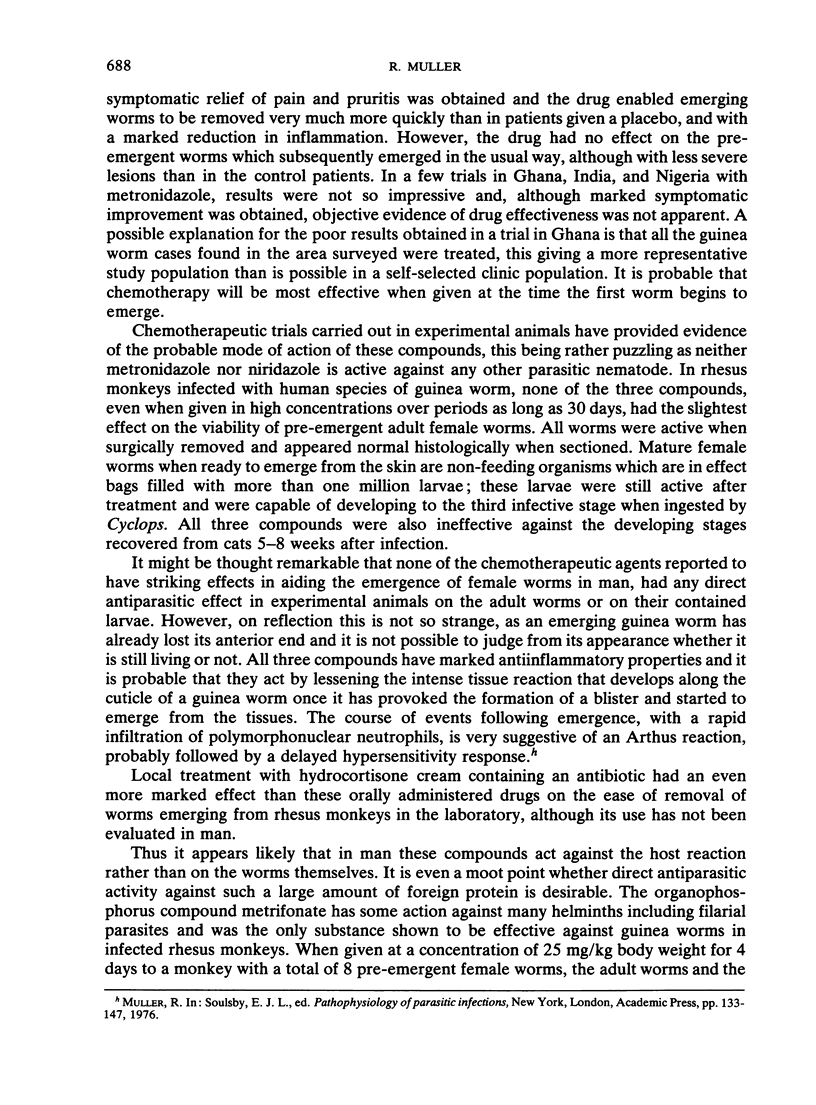Abstract
Guinea worm infection is one of the most easily prevented parasitic diseases, but it is nevertheless a common cause of disability in rural areas of Africa, south-west Asia, and India. Infection occurs when drinking water is infested with infected Cyclops, a microcrustacean. Worms up to 70-80 cm in length develop in the subcutaneous tissues of the feet or legs and larvae are liberated to renew the cycle when an infected individual steps into a well or pond from which others draw drinking water. Infection is markedly seasonal because of (a) the influence of the climate on the types of water source used and (b) the developmental cycle of the parasite. The disability may be economically very important if the period of infection coincides with busy periods in the agricultural year. Sieving water through a cloth is sufficient to remove the Cyclops, but on a public health scale improved water supplies are required for control. Once the cycle of reinfection can be broken in any district the disease disappears. Chemical treatment of water bodies with temephos is also an effective and safe way of controlling transmission. Treatment consists of rolling out each emerging worm onto a small stick, a few centimetres each day, and certain drugs reduce the pain and pruritis and enable the worm to be removed more quickly.
Full text
PDF








